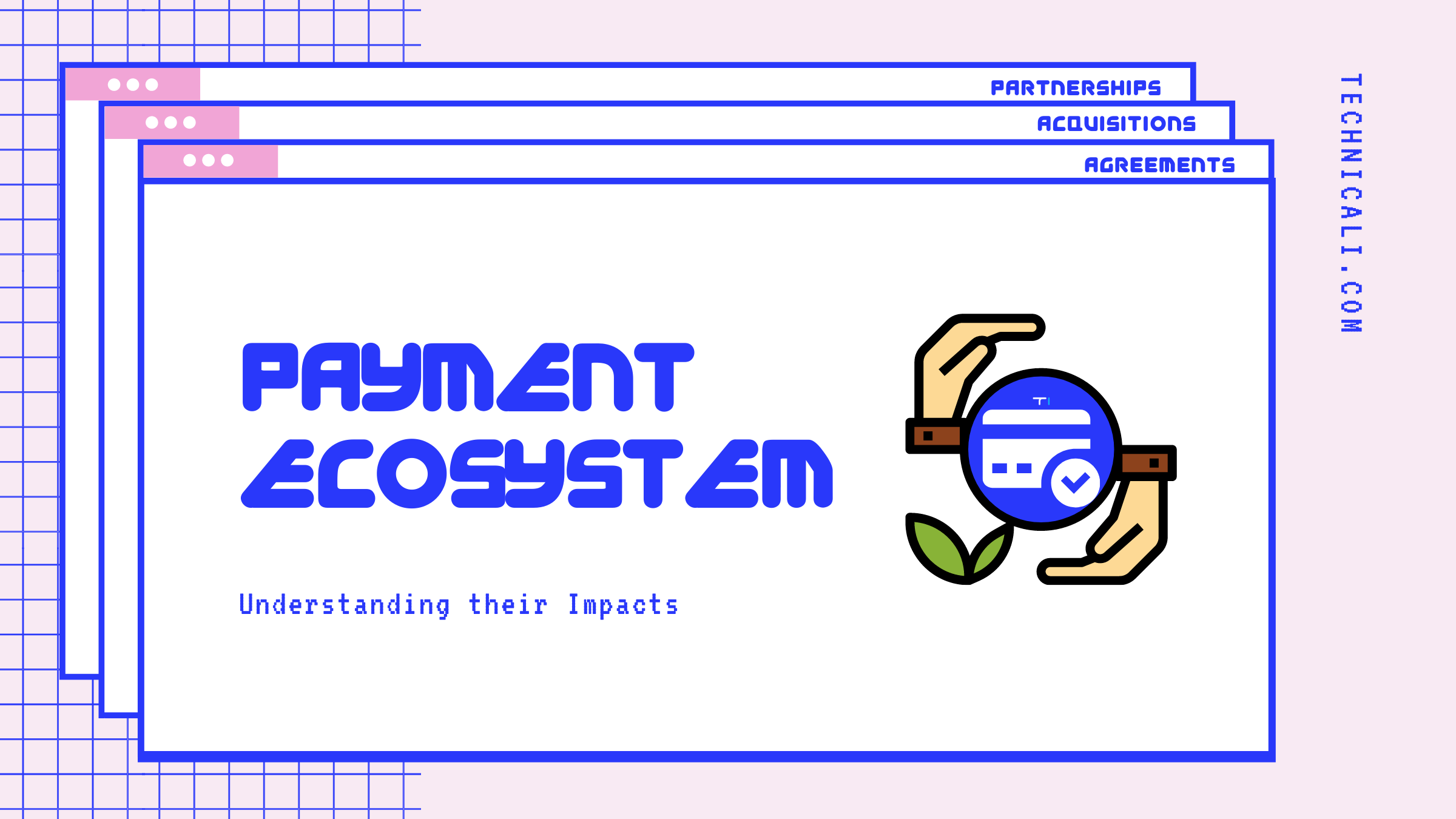With the entry of constantly updated technologies and different payment methods in the payments industry, the scenario for the payment ecosystem is in flux. We have seen a stark contrast between traditional payment infrastructure and the modern way implemented by the payments companies in the coronavirus crisis.
While in the past, payment processing only meant transferring the consumer funds from one account to another, today, technology has redefined the meaning of payment processing. Today, you can pay your bills, manage multiple business models with ease, and facilitate speedy international transactions. The change in the dynamics of customer experience and business with contactless payments is a huge boost in this coronavirus crisis.
The dynamics of transactions have changed from cash to credit cards(CC) and from cheques to digital payments in the payments industry. E-commerce has paved the way for increasing the use of cards to make online payments, thanks to artificial intelligence. Further, the covid 19 outbreak in the world has expanded the online transactions with the use of mobile payments and e-wallets in the financial markets.
The payment ecosystem mainly consists of the customers, merchants, issuer banks, and acquirer banks. Some other notable players that play a significant role in the payment ecosystem are payment processors, card networks, payment gateway, payment facilitators, and intermediaries resellers. Independent sales organizations (ISO) also play a vital role in the payment cycle.
This statistic provides us with the countries with the highest digital payments worldwide in 2018. It states that China is leading the payments industry with 33% in 2018, closely followed by the U.S., Japan, the UK, and Germany. The most interesting thing to note is that the country was at par with the U.S. in this industry in 2012. However, the large ecosystem players such as Alipay and WeChat Pay, exponential growth in debit and credit card usage, and strong government policies have enabled China to the forefront of the payments market worldwide with a huge market share.
Mobile payments, notably 3.5% in 2011, saw monstrous real-time payments growth of 83% in 2018 in the industry. Some of the factors that drive the payment industry in China are the rapid growth of e-Commerce, low growth of other payment channels, high smartphone penetration, and integrated services offered by various businesses and brands namely Alibaba and Tencent. Moreover, clients, merchants, and consumers are also preferring online shopping more in the covid 19 scenarios. The growing number of online shoppers has also benefited the value of food delivery services and their supply chains. With the fast and seamless payment system, people can easily make both long-term and short-term transactions in a second without reaching out to the bank. To opt-out from any ordered service with no added costs or risk is also within our finger touch.
Contents
- 1 Brief introduction to key players involved in the payment ecosystem
- 2 Authorization process of the payment ecosystem
- 3 Financial services companies
- 4 Elements of financial sector
- 5 Partnership, Acquisition, and agreement
- 6 Partnership
- 7 Acquisition
- 8 Agreement
- 9 Partnership in the payment ecosystem
- 10 Acquisition in the payment ecosystem
- 11 Agreements in the payment ecosystem
- 12 Conclusion
Brief introduction to key players involved in the payment ecosystem
- Issuer
The issuer is the bank or CC company that issues cards to the customer. The issuer bank holds the responsibility of making payments to the merchant or acquirer bank. They pay the amount on behalf of the customer and assume the risk if the customer is unable to pay the credit amount.
- Acquirer
The acquirer is the merchant’s bank that allows merchants to accept credit card payments from the customer’s issuing bank. The acquiring bank takes the risk and transfers the transaction information to the card networks and issuing banks to complete the transaction process. The primary function of an acquiring bank is to process the card payments, but it also acts as a payment processor sometimes and settles the transaction amount for the merchant.
- Payment processor
The payment processor acts as a middle man and manages CC transactions between any consumer or merchant and the financial company. They work in the background and focus mainly on processing card transactions, fulfilling anti-fraud measures, and instituting merchants’ accounts. Payment processor aids in transferring the funds and authorization of the transaction to oversee the recovery of the payments by the merchant.
- Payment gateway
The payment gateway is the software tool that helps to accept payments online or in the store. They can encrypt the sensitive payment information before transferring it to the merchant’s website and bank. Payment gateways are physically available in the store with a POS(point of sale) system. While virtually, they are enabled in the shopping cart of the website. The excellent security parameters of the payment gateway ensure the privacy of the data and safe transfer of funds.
- Credit Card Network
Credit card networks are responsible for verifying the card details and ensuring smooth transactions between card companies and merchants or consumers. They facilitate the communication between the acquiring bank and issuing bank. They set the transaction terms and assessment fees in the payment process. They are the agent that decides whether consumers have sufficient funds in the account to make the purchases or not.
Authorization process of the payment ecosystem
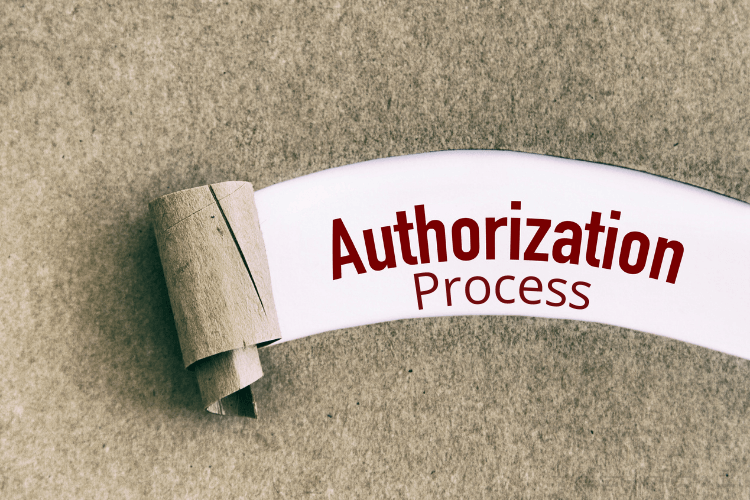
- The customer swipes the CC or debit card to make purchases at the pos terminals or system that captures the customer’s information.
- The captured information is transmitted to the merchant’s service provider, who is further responsible for transferring the information and purchase amount to acquiring (merchant’s) bank. (In some cases, the merchant’s acquiring bank also act as the service provider)
- The information received by the acquiring bank advances it to credit card networks such as Visa and Mastercard for verification.
- The CC network forwards the transaction details and verification to the issuing bank. The issuing bank then approves or declines the payments according to the fund availability in the cardholder’s account.
- The approval or decline of the payment forms the response code, which is sent back to card networks. The positive response code points to the transaction approval, which is called authorization.
- The issuing bank conveys the authorization code response to the credit card network and holds the fund associated with the transaction.
- The credit card network also sends the authorization code and its response to the merchant’s payment processor. The payment processor then sends its consent to the acquiring bank.
- The response is then routed to the website terminals of the merchants or clients that may print the receipt depending on the transaction type.
- It marks the end of the authorization process, with the merchant’s acquiring bank collecting the payment.
Financial services companies
There are various sectors or segments in an economy that are divided according to their similarities. The business involved in one sector provides different but related products or services.
For example, the telecom sector provides mobile services, the agricultural sector providing agricultural services, and the financial service sector. Financial service companies provide economic and financial services such as managing cash, credit, union, banks, credit card networks and companies, business related to stocks & accounting, investment funds, and various other features.
Financial service is one of the most influential and significant factors in an economy. The broad range of activities comprising financial services such as banking, insurance, real estate, and investments provide the base of development of any country. Giant conglomerates dominate this sector along with a wide variety of small companies.
Financial service companies provide services through which the customers and businesses receive financial aid. For instance, a payment gateway enables the exchange of data and funds between the merchant or clients and the consumers. The services in transfers and transactions include accepting various forms of payments and settlement of the account.
Financial service companies are responsible for giving hundreds of thousands of advice that will help to manage the money as well as the assets involved in the business. On the one hand, financial service is a temporary task, whereas buying monetary goods are tangible assets. Financial assets such as real estate, stocks, bonds, loans, insurance are long-term provisions to be dealt with caution.
Importance of financial sector
- The financial sector is the backbone of any nation. Financial service companies provide the capital flow and liquidity in the economic value.
- The prosperity and development of any country depend on the intensity and strength of the financial service sector.
- The excellent financial service sector ensures more earnings and increased purchasing power of the consumers.
- The necessary access for a growing number of credit purchases enables people to borrow money from this sector. This boosts the morale and confidence of the people.
- The broken financial service sector can make the economy suffer from rising unemployment, a drop in wages, and less spending capacity of people.
- If the financial service sector is frail, the central banks can lower the interest rate to compensate for the situation, which leads to recession.
Elements of financial sector
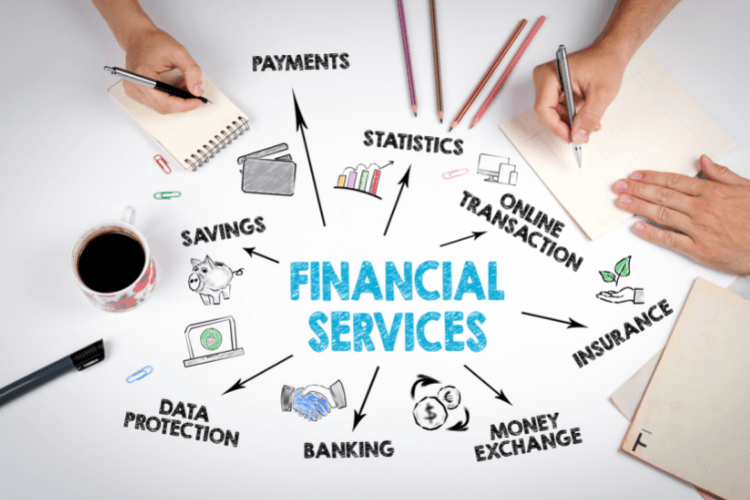
- Banking Services
The core of the financial sector is the banking service. It is directly connected to savings and loans. The financial service sector is vast and incorporates various aspects such as investments and distribution of risk but banking services deals with the monetary funds. Large commercial banks, credit unions, community banks, and other such institutes provide these services.
- Investment services
People engage in investments through stocks and bonds. These securities are bought and sold at varying prices to earn revenue. Brokers are people who advise and help in selling these securities for a commission. Brokers can also be direct online services or software apps that assist in managing portfolios for the customers at annual charges.
- Insurance services
Insurance is an aid that protects you in case of death and injury. Life insurance, health insurance, disability insurance, fire insurance are some of the familiar insurance provided by this sector. Further, insurance such as car insurance, house insurance, mobile insurance, insurance against theft is rapidly gaining popularity. The insurance agent is the representative that educates and guides us about these insurance policies.
- Accounting and Tax services
The accounting and tax sector includes currency exchange, credit card machines, credit networks, and transfer wire services. It also includes global payment provider companies such as MasterCard and Visa, derivatives, trade commodities, and debt resolution services. The accountants look at the financial statements and records of transactions following the federal laws and generally accepted accounting principles (GAAP).
Partnership, Acquisition, and agreement
Partnership

When you start an online business, you have to purchase or outsource certain aspects, such as a payment system from a different company. You have likely spent a lot of time and faced challenges building your website as well as the customer base. So while adding any new software, it must provide value and seamlessly integrate with your website platform.
You should focus on selecting your payment system provider having an influential network of existing partners. The fruit of a strong partnership will innovate the payment system and technology to ensure smooth payments in the future. The changing technologies come with a new challenge of acceptance that can be overcome with productive partnerships.
With the political, economic, and social impact, change in the ecosystem of payments also promotes opponent and partnership. If the businesses want to offer genuine services with speed and innovative payment options, a partnership is the best way to achieve it. It can better help to adapt to the changing technologies while also pleasing the needs of your clients and fulfilling the costs of the services.
Key features of partnership
- Customer service
The efficient partnership enables improved customer services with coordinated support and backing. Every time there is a problem, the client receives instant and reliable solutions. Further, the customers receive a joint alliance of partners that helps in increased integrations and seamless experience.
- Enhanced Efficiency
The real-time integration of platforms brings faster solutions and improved efficiency. The collective strength of both parties is ensured to be used to its full potential. This helps to ensure efficient functioning with lesser errors and faster implementations. The resources of both the companies that are partners are used most efficiently.
- Development and Progress
The development and progress when any company collaborates in a partnership are bound to rise. One company can leverage another company’s strengths to drive profits and vice-versa. Either way, the customers are on the receiving end who will always receive high value for their money and instant solutions for their problems. Associating with a partner’s ecosystem is a great way to excel in areas that your company may lack.
- Sharing of information
The partnership between firms leads to the continuous sharing of knowledge and information to improve businesses. Both the participants undergo regular discussions and strategies to solve the business problems and customer’s difficulties. This information sharing guides both the companies in better decision making, stable marketing strategies, and intensified product sales or services. The sharing of information follows strict data privacy as well.
Acquisition

The act of buying a large number of shares of another company to gain ownership of that company is called acquisition. An acquirer makes a deal with other companies to obtain the rights by either acquisition or merger.
Acquirers can also be institutions or business models in many instances that allow the merchant’s account to manage and transfer funds in electronic payment methods to most banks.
The corporate acquirer purchases a large chunk of shares to achieve the believed benefits to be received by the acquired company. In comparison, a merchant acquirer processes merchant payments and facilitates communication, deposits, and settlement of the accounts through the payment network.
The constant focus of companies all over the world today is on acquiring other big or small businesses to gain flexibility, remain up to date, and upgrade themselves to the changing environment. Acquiring a company is more feasible than growing a new company. The acquired company is already set with resources, technology, and personnel for the near future. You just need to tweak a few changes and provide digital solutions if required to get started with the latest developments. On the contrary, growing a new company from scratch required a lot of patience and time, along with regulatory demands.
The highlight of acquiring a company lies in keeping all the beneficial components while eliminating the non-productive ones. The company also has the option of entirely changing the business and its data analytics to integrate it into its current business.
Some reasons for acquisitions
- Growth in new markets
Acquiring companies can help you to expand your reach in new markets. Acquiring companies that provide complementary products or services to your business can benefit you with an increased customer base. It is a beneficial deal to acquire a company rather than starting a new one when extending your reach in new markets.
- Elimination of the competition
The elimination of competition is often the reason for most acquisitions in the market. When you combine the power of two companies, you can directly eliminate the giant competitors. Amalgamating two companies lead to increased market shares, technology, resources, and personnel. Both the companies gain a competitive advantage against the significant competitor.
- Venture into new products or services
Companies often dream of venturing into new products and services to increase their value chain of market reach and share. Acquiring gives them the chance to experiment with new products and services. Moreover, you can also market your product to the acquired companies target market and vice-versa. This will lead to increased synergies and sales for both companies.
- Financial and cost synergies
Acquiring helps the company to get hold of new and cheaper funds. Buying an economic company can lead to better financial leverage and a high liquidity position. Further, one can access additional debt financing with a healthy company’s takeover. When you combine companies that are related or similar, there are boundless possibilities of cost-saving.
- Sharing of resources
The resources are shared among the companies. When you acquire a company, you take over the various resources such as human resources, financial resources, raw material resources, managerial resources, etc. You can freely use these resources for your business. Sharing the resources strengthens the capacity and capability of the company.
Agreement

An agreement is a commitment or series of promises that frames the consideration of parties. There are two parties involved in the agreement, one who proposes the offer and the other who accepts it. There are three most essential aspects related to the agreement that is of importance to understand.
Any proposal that is supported by acceptance becomes a promise. A promise is when the offer is made and is accepted with mutual consent. And promise plus consideration equal to an agreement.
It simply implies that any set of a promise backed by the consideration is agreement. Whereas agreement along with enforceability is a contract. Enforceability is nothing but the legal aspect of demand and its implementation.
The simple formula to understand this concept is:
- Offer and acceptance is a promise.
- Promise and consideration is an agreement.
- Agreement and enforceability is a contract.
An agreement is made when two parties mutually understand their rights, duties, and obligations towards each other. It is considered invalid without the offer, consideration, and acceptance.
The agreement can either be an oral or written deal. But it is beneficial to have a written contract drawn by a lawyer with the promise, agreement, and consideration mentioned in the contract. Even though the written contract is more advisable, a verbal agreement also holds legality and can land you in court in case of a breach.
Elements of agreement
- Offer
A party who makes an offer to another party to fulfill the promise with certain obligations is called an offeror. The person to whom the proposal is presented for acceptance is called an offeree. The terms and conditions of the offer should be clearly communicated to the offeree. The contract offer can be made by the sole proprietor, partnership firm, or business.
- Acceptance
Acceptance is the willingness and approval of the offeree, who is implied to receive something in return. The offer is of no use unless the offeree accepts it. The acceptance is to be communicated either verbally or in writing within a reasonable time. For example, acceptance is when you agree to pay for the purchased item within the allocated time frame.
- Consideration
When there is an agreement, the proposer often has some obligation to meet for the contract validation. These values or obligations are considerations. Considerations are often in monetary terms but can also be an action or promise demanded by the counterparty. Generally, without consideration, there can’t be a binding agreement as people don’t enter into a contract without expecting something in return.
- Terms and conditions
Terms and conditions are the obligations on which the contract or agreements are made. A written contract is more authentic as it can serve as proof in case of a breach. The agreement contract should include all the dates, information, terms, remuneration, and clauses that the offeror and offeree should endure.
- Breach
When the terms of a contract are not met, the counterparty can sue the other for damages and compensation. A breach of contract can be breaking any agreed terms of a legally binding agreement. The injured party can file a lawsuit for damages. Resolution of disputes and impartial decisions can be taken if all the terms are laid out in the written contract.
Partnership in the payment ecosystem

The partnership is the new way to approach innovative techniques in the payments ecosystem and industries. It is often seen that lesser-known enterprises having innovative and creative ideas speak to the giants in the market to acquire their partnership. This way, they gain the funds and resources needed to target the market, and the big companies get to venture into new markets value chain.
The best examples of partnership are Goldman Sachs and Apple that announced their collaboration in March 2019. The aim was to provide an Apple Card, a credit system for Apple’s payment service (Apple pay). People like the innovative features of tracking their spendings and security features that were managed by swipes.
This Apple card service strengthened Apple’s financial services. While Goldman Sachs had just begun with Apple’s partnership growing it to many more industries such as General Motors utilizing the same technology. Further, rapid revenue growth and prominent companies were requesting their services.
As we can see from the above example, the partnership helps gain quick, affordable, and less risky investment deal. Approaching and partnering with a well-established company helps gain a loyal customer base and is the best way to acquire increased customers in the marketplace. When two established companies make a partnership deal, the customer base increases ten folds, and customers reap advantages from both parties.
Acquisition in the payment ecosystem
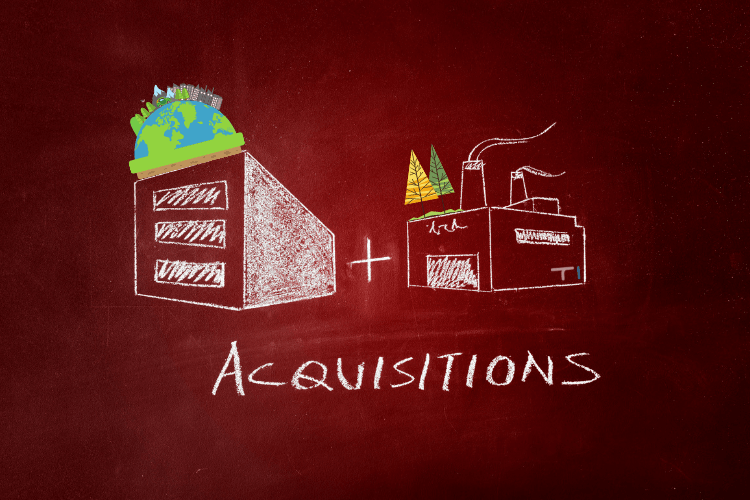
Mergers and acquisitions are changing the payments ecosystem of the entire world. It has paved the way for international firms of the European Union to step foot in the domestic market. Expanding the market, investing in new products, diversifying the distribution channels, and gaining more customers are certain benefits of mergers and acquisitions(M&A). Eliminating the competition is one of the most common reasons for the acquisition.
An example that sets new levels is the Venmo acquisition by PayPal. PayPal is known for acquiring companies that are hard to beat. BillMeLater and Braintree(Venmo) are some of them. Though many payment companies were established, PayPal was never threatened by any of them until Venmo came. Venmo, a mobile payment application, threatened the core motive of PayPal, which was peer-to-peer payments.
Venmo, which Braintree bought, implemented the success of its foundation, which any other startups did not establish. PayPal was threatened by this new competitor in the market and acquired Braintree, successfully eliminating the competition. The current version of Venmo, after the acquisition is focusing on developing dynamic swap payments for online websites.
The strategic aspect of buying a company involves business growth and acquiring new technologies for efficient functioning while eliminating the competition. The purchase payments of acquisition can be done in cash, equity, cash, and equity both, or asset.
Mergers and acquisitions are different. A merger is when two companies come together to form a new entity with mutual consent. While acquisition occurs when one business takes over another company. An acquisition can be hostile or friendly depending upon what past crises it has gone through.
Agreements in the payment ecosystem
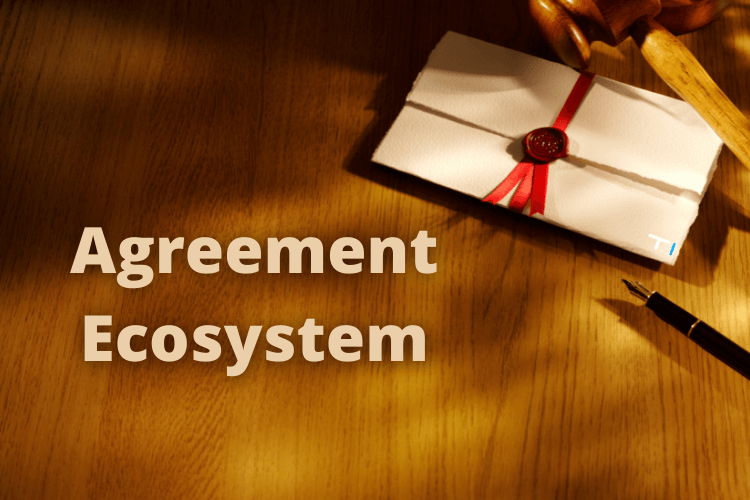
The legal document between the lender and borrower ensuring the consent of payment is agreement. The borrower has to pay the lender the amount borrowed within the allocated time frame. The legal agreement contract should include all the information related to the money given, payment terms, mode of payments, and due dates of payments.
Drafting a legal document when lending money is significant as it helps avoid confusion and brings clarity to both parties involved. Even if you are loaning the amount to your friend, colleague, or family member, it is helpful to have a legal agreement.
In case of any dispute, this legal contract will protect your money and act as legal proof. The benefit of a formal agreement contract is that it contains all the required information about the loan amount, due dates, interest rate, etc. And hence the borrower or lender can’t make any false claims in the future.
Credit agreements are the best example of agreement in the payment ecosystem. Credit agreements are legal documents of loans made by credit companies and customers. The terms and conditions of the loan are mentioned in the credit application that is conveyed to customers.
After their approval, the CC company lends them money temporarily. The recovery of this credit amount involves deferred or delayed payments with interest and fees charged on the amount. Here, the customer has agreed to pay the original amount with the charges. He can be sued in case of any breach.
Interchange fees
Interchange fees are charges that a merchant account pays for availing the credit or debit card services in the payments ecosystem. These are the transaction fees are charged and collected by credit card issuing companies for giving financial services to the client.
These fees are charged per card swiped to the merchant’s card. The fee collected is protection against the credit risk for borrowed money. These fees are charged on a percentage basis of the overall transaction amount.
Due to the financial and credit risk, CC transaction costs are slightly hiked in comparison to a debit card. Big credit card companies such as Visa, MasterCard, American Express, and Discover are responsible for setting the fees. These Industries set their own charges, and the merchant’s bank has to pay for using their financial service.
Also known as swipe fees, interchange fees are updated regularly and vary for different sectors such as airline, supermarket, electronic, etc. Not only merchants or clients, but any consumer who uses the financial services of debit cards or credit cards pay interchange fees.
Interchange fees are significant because it boosts instant cash into the payment system. It helps to bring growth and development by expanding the market. Sometimes you are low on cash and want to purchase some items. A CC facilitates immediate cash, which you can use for a particular time frame. You only have to pay a small interchange fee for using their services.
Conclusion

Even though the complex nature of payments is changing with new technologies, companies adapt to evolving situations quickly. The diverse landscape of the payment industry and covid 19 has forced many to be in the frontline and practice creativity to survive the industry. To match the pace of changing industries in the face of innovations, challenges, and technologies, businesses need to branch out and implement new value-added technologies. Companies that are stagnant and opposed to accepting new technologies are surely going to be doomed.
For survival in this ever-changing payment ecosystem, partnerships, mergers, acquisitions, and agreements are on the rise. Industries are taking help from each other to compete for the problem arising in the payments infrastructure. The future of the payment ecosystem lies in accepting each other’s weaknesses and making them your strengths by using partnership, agreements, and acquisition to refine your businesses both for the long term and short term.
